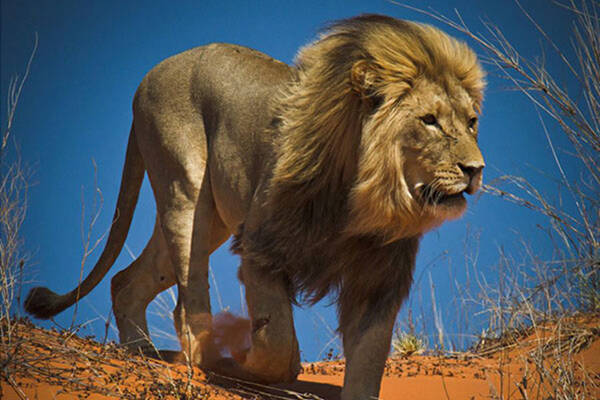Panthera leo kamptzi
IUCN
LCBasic Information
Scientific classification
- name:Panthera leo kamptzi
- Scientific Name:Panthera leo kamptzi,Cameroon Lion
- Outline:Carnivora
- Family:Schizopoda Felidae Panthera
Vital signs
- length:About 1.7 meters
- Weight:150-200kg, up to 250kg
- lifetime:20-25 years
Feature
Large, well-proportioned body, medium-length limbs, digitigrade
Distribution and Habitat
Distributed in Yoko, Cameroon, and the upper reaches of the Sanaga River.
Appearance
The male weighs 150-200 kg, with a body length (excluding the tail) of 1.7 meters, and can reach a maximum of 250 kg. The hair is short, and the body color is light gray, yellow or brown. The male lion has a long mane that can extend all the way to the shoulders and chest. The body is large, the body is even, the limbs are medium-length, and the digitigrade is digitigrade. The head is large and round, the snout is short, and the vision, hearing, and smell are all well developed. The canine teeth and carnassial teeth are very developed; the upper carnassial teeth have three cusps, and the lower carnassial teeth have two cusps; the molars are relatively degenerate, and the crown diameter is smaller than the height of the outer incisors. The fur is soft. There are 5 toes on the front feet and 4 toes on the back feet; the claws are sharp and retractable. The tail is well-developed.
Details
Cameroon Lion (scientific name: Panthera leo kamptzi) is a subspecies of lion, originally a subfamily, and is now one of the Senegalese lion populations.

Lions usually live in groups, with a pride of about 8 to 30 members, with an average of 17. They often include several generations of female lions, at least one adult male lion and some growing lion cubs. Female lions form the core of the lion group, and they rarely leave their birthplace. The lion group contains 2 adult male lions, but there is definitely only one leader. Adult male lions often do not stay with the pride, they have to wander around the territory all year round and defend the entire territory. Generally, they can be the leader of the pride for a few months to a few years, depending on whether they are capable enough to defeat foreign male lions.
In a lion group, female lions are the main hunters. Female lions often hunt collectively. The lion group members spread out to form a fan shape to surround a group of prey, surround the prey in the middle, and then approach from all directions. The prey of the lion group is very wide, and they often kill African buffalo, gazelles, and giraffes, but they prefer to hunt medium-sized to large ungulates, such as zebras, impalas and other types of antelopes.
The gestation period of a lioness is generally 100-119 days, and each time there may be 1-6 cubs (usually 2-4). When the cubs are just born, they have ochre spots on their bodies, especially on their abdomens and legs. When the cubs are four weeks old, they begin to try to eat meat, usually the semi-digested meat that their mothers vomit back to them. When they grow to 6 or 7 months old, they are basically weaned, and the spots on their bodies gradually disappear. The cubs usually grow up with their mothers until they are about 2 years old, at which time the male subadults face the severe problem of independence. To reach sexual maturity, females have to grow to 2-3 years old, and males have to be 5-6 years old.
The biggest natural enemies of lions are modern humans and hyenas. Hunting by people and habitat loss have put all African lion subspecies in a survival crisis. African lions also face the problem of diseases. Infectious diseases that break out on the grasslands can kill tens of thousands of animals in a short period of time, such as tuberculosis and feline AIDS (FIV).
Listed in the 2008 Red List of Endangered Species of the World Conservation Union (IUCN) ver3.1 - Vulnerable (VU).
Protect wild animals and eliminate game.
Maintaining ecological balance is everyone's responsibility!








